|
So, you will remember Jason Reza Jorjani, the so-called alt-right “intellectual” who loudly pretended not to support Nazism. I read his book, Prometheus and Atlas, and identified not just fringe history themes (including ancient astronaut claims) but an underlying pattern of Nazi and Nazi-adjacent material in it. Now, the New York Times reports on a Swedish student’s encounter with Jorjani when he thought no one was looking. The Swedish student went undercover as a member of the alt-right and caught Jorjani making exactly the kind of statements that I knew that Nazi-loving weasel would make as soon as he thought that he was speaking only to a sympathetic ear: Mr. Jorjani imagined a near future in which, thanks to liberal complacency over the migration crisis, Europe re-embraces fascism: “We will have a Europe, in 2050, where the bank notes have Adolf Hitler, Napoleon Bonaparte, Alexander the Great. And Hitler will be seen like that: like Napoleon, like Alexander, not like some weird monster who is unique in his own category — no, he is just going to be seen as a great European leader.” As miserable as I found it to read his book, I’m glad I reviewed it for an academic journal (to be published this fall) so that when future students try to do research on Jorjani and the alt-right, it is my opinion they will find. One of the lesser problems with the alt-right is that their love of all things European, particularly Germanic and Nordic, sort of ruins it for everyone else. I wanted to talk a bit about an interesting historical artifact that I recently purchased, but increasingly to express interest in central European history is to be seen as embracing the alt-right. Look at the way imperial German artifacts have taken on Neo-Nazi associations after Neo-Nazis adopted the WWI-era imperial German naval war ensign (the white flag with the black cross and imperial eagle) as a substitute for forbidden Nazi standards. You’ll see one pinned up on the walls of every Nazi sympathizer, usually right next to their Confederate battle flag. The good thing, I guess, is that since Hitler really hated his native Austria-Hungary, its symbols haven’t yet taken on rightwing connotations. Plus, it was a little too multicultural for Aryan supremacists. As I’ve mentioned once or twice, one of my interests is European history, especially the history of the Habsburg Empire. At one time or another all of my ancestors from across Europe lived under Habsburg rule, and I still have my great-uncle’s third grade report card emblazoned with the Austro-Hungarian Empire’s imperial double eagle seal. Austria-Hungary had its troubles as an empire (and a full-on racist Hungarian government in Budapest), but as a cultural force, it held its own against all comers. And one of the things they did better than their rivals, aside from classical music, was design. The imperial eagle is iconic, but the Habsburgs did way more than necessary to make everything from public architecture down to third grade report cards far more beautiful than it needed to be. I suspect imperial officials hoped to create political and social unity through art when politics failed. Over the years, I’ve collected a number of artifacts with the double-headed eagle, mostly Austrian but a few Russian. Some are contemporary pieces, but quite a few are originals. I have a wooden one carved, probably in Germany, in the nineteenth century, presumably as a tourist piece. I have an original Habsburg military belt buckle emblazoned with the eagle, and some coins from the period. I even have a Romanov-era brass box with a hand-etched imperial eagle surrounded by other heraldic motifs on the sides of the boxes. It’s not an official imperial piece; it seems to have been cobbled together in imitation of an imperial original, presumably by someone who wanted to ape upper-class style. I used to have many of my eagles on display in my house, but recently it’s become a problem. The Habsburg eagle is a modified form of the Holy Roman Empire’s eagle, and both it and the double eagle of Russia are descendants of the Byzantine double eagle. In 1721 and again in the 1850s, the Russians twice purposely remodeled their Byzantine-style eagle to look more like the more prestigious Austrian version, in hope of appearing more European. So similar are they that many people mistake my Austrian eagles for Russian ones, and this is just another thing that Donald Trump has ruined. My eagles live in my office now until displaying one with two heads loses its political overtones. Anyway, a few weeks ago I acquired a fascinating piece I found listed on eBay. It was a 37 mm seal stamp featuring the Austrian double eagle and some German text, all in imperial black and gold. I knew nothing about it other than it was warranted to be at least 100 years old. The graphic design was striking, and since it was less than $5, I bought it from a German dealer in seal stamps. According to the company’s website, they run a project where they buy European, primarily German, seal stamps, scan and catalog them for reference, and then sell the originals on eBay. Side note: I am astonished at how quickly the German postal service works. It came in only a couple of days and not the three weeks eBay estimated. When I received the seal, I was impressed. It looked so sharp and clean that at first, I thought that I had received a reproduction. But, no, it was the original; the paper quality used by the imperial government was just that good. But I still didn’t know what it was or exactly how old it was. That required some investigative work, and it wasn’t easy because pretty much no one cares about seal stamps, or has done much work to catalog them. As I learned, embossed seal stamps replaced wax seals in the middle nineteenth century as the official way European governments closed envelopes and correspondence to authenticate them. Pretty much every embassy, ministry, and organization had them. Personally, I find these to be much more interesting than postage stamps, which were used by anyone for any old thing. These had a specific purpose and were commissioned for long-forgotten government agencies. Weirdly enough, the value of these seals is not related to the importance of the agency using them. Instead, collectors value those what were issued by embassies and consulates from familiar European capitals rather than those used by central governments. A stamp issued by an embassy in London can sell for three times the price of one used by the office of a head of government or head of state. Since there was no guide to the development of seal marks or seal stamps, the only information I had was on the stamp itself and similar stamps also offered for sale. The starting point is the German inscription: “Wien: K.u.K. Ministerium des Kaiserlichen und Königlichen Hauses und des Aeussern,” which translates (awkwardly) as the Imperial and Royal Ministry of the Imperial and Royal Palace and the Exterior.” As you can see, there was a variety of stamps from the same agency, and the development of the art style suggested a rough chronological order, assuming that they grew more refined and sophisticated over time. I have the nicest of them, I think. To date the seal, I knew that the terminus ante quem must be 1915, since in response to World War I, the Austrian eagle received a patriotic makeover that changed the arms on his shield. The terminus post quem must have been 1867, which was the year that the Austrian Empire reorganized into the Dual Monarchy of Austria-Hungary. But to do better than that would require more specific information.
That required some quite dull research into the arcana of the Imperial and Royal Ministry of the Imperial and Royal Palace and the Exterior. The awkward name was a clue. Because the Dual Monarchy was made up of a nameless Empire (usually called Austria) and the Kingdom of Hungary, its organs were labeled (before 1867) Imperial-Royal (K.K.) (well, more or less; there are technicalities) and then (after 1876) Imperial and Royal (K. und K.). I won’t bore you with all the details, but its central government contained only three offices: the foreign ministry, the war ministry, and the finance ministry, along with the monarch’s official court. Everything else devolved to the various component parts. For reasons too complex to get into here, monarchies in the German states combined their royal courts and foreign ministries into joint Ministries of the Palace and Exterior, but in most states the palace aspect had faded away by the late 1800s. In Austria, however, this was not the case, and the foreign minister assumed the position of head of government by dint of also being the titular head of the imperial palace and the Crown Council. I learned from a biography of one of the foreign ministers that from 1867 this ministry was called the Imperial and Royal Ministry of the Imperial Palace and the Exterior, as you can see from some of the older seals above. But in 1895, the Hungarians threw one of their periodic snit fits and received compensation by having the Emperor’s household renamed to include Hungary’s royal adjective. Thus, the awkward name Imperial and Royal Ministry of the Imperial and Royal Palace and the Exterior. You’ll see above that one of the seals features Hungarian writing and alternative spellings where an umlaut has taken the place of the “e” in “Aeussern” and a “z” for the second “s.” I’m assuming, though I don’t know, that this seal is later than mine for those reasons, along with the more modern look of the wider, condensed sans serif typeface, which is well on its way to becoming Helvetica, and the less frilly eagle, who appears more stylized. I know that the ministry was still using my seal’s spelling as late as 1905, when they published volumes under that name, though the umlaut had started to be used around 1904, albeit with the double-s, and I found an example of the change of spelling to “Äuszern” from 1914 in official documents and 1907 in the popular press. It seems to be related to changes to the Österreichische Kanzleisprache (Austrian chancellery-speak), the archaic government language of the monarchy, to bring it into closer alignment with usage in the German Empire, which was then Austria’s closest ally. So, I’d say my seal dates from between 1895 and 1905, or perhaps slightly later. I’m sure someone who knows more about this than I could narrow down the date of my seal even further, especially if one had access to imperial documents to see the dates when each seal was in use. The bottom line, though, is that understanding a historical artifact requires understanding its context, not just the object itself. I made my seal into a vector graphic, and it would probably make for a cool element to use on t-shirts, office supplies, and other merchandise, but so far it looks like it is prohibitively expensive to have such things custom printed at anything resembling quality, or there are really large minimum orders that make it rather ridiculous if I am not running a store to sell them.
35 Comments
pferk
9/21/2017 10:34:52 am
What a fine research story.
Reply
E.P. Grondine
9/21/2017 10:48:07 am
"I made my seal into a vector graphic, and it would probably make for a cool element to use on t-shirts, office supplies, and other merchandise, but so far it looks like it is prohibitively expensive to have such things custom printed at anything resembling quality, or there are really large minimum orders that make it rather ridiculous if I am not running a store to sell them."
Reply
Americanegro
9/21/2017 11:23:50 am
VistaPrint does individual (1 count) T-shirts for $14-18.
Reply
9/21/2017 11:27:30 am
It was my understanding that they aren't the best quality, but since I'm not well-versed in the different types of fabric printing, I couldn't say for sure.
Reply
Kevin Hendrickson
9/21/2017 07:39:10 pm
Cool Seal Stamp!
Reply
BigNick
9/21/2017 09:26:09 pm
My second favorite blog uses newsprint.
Reply
David Bradbury
9/22/2017 03:13:41 am
Subtle !
Reply
BigNick
9/22/2017 11:45:00 pm
That should be teespring not newsprint. Ducking auto correct.
Reply
MARS VLTOR
9/22/2017 01:49:17 pm
National Socialism and Facism are found on the left side of the political spectrum so Mr. Jorjani must be confused.
Reply
Z
9/22/2017 05:51:25 pm
Your claim is and ridiculous. See http://www.snopes.com/2017/09/05/were-nazis-socialists/.
Reply
MARS VLTOR
9/22/2017 08:35:33 pm
Yes, Snopes is a great resource not at all beholden to ideology- paragons of impartiality.
BigNick
9/22/2017 11:07:38 pm
The right is all about personal freedom, unless you want to get an abortion, or marry someone of the same sex, or teach science in science class, or teach kids about safe sex. And who gets books banned from public libraries?
MARS VLTOR
9/23/2017 12:36:30 am
Big Nick
MARS VLTOR
9/23/2017 12:44:25 am
I am a dumb old soldier. I butchered our dear English language in my last post.
Not the Comte de Saint Germain
9/23/2017 03:59:41 pm
Authoritarianism is the political tendency that entails a powerful, unaccountable government and limits personal freedoms. It comes in leftist forms (communism) and right-wing forms (fascism).
MOHAMMED
9/22/2017 05:13:32 pm
CONGRATULATIONS in advance! Join the ILLUMINATI BROTHERHOOD online today and have all your desires
Reply
Army Vet
9/22/2017 10:02:04 pm
Good thing I have my Imperial German Eagle engraved on my high capacity semi auto AR-15 rifle, and not on a flag, or Colavito would think I'm an alt right nazi racist! What are you liberals so afraid of? If you like your Imperial collectibles go ahead and display them in your home. Don't be such a puss.
Reply
MARS VLTOR
9/22/2017 11:24:33 pm
You may cause some hurt butts and exploded heads here; liberals often don’t like their worldview challenged with sensible words such as yours.
Reply
MARS VLTOR
9/22/2017 11:29:26 pm
I would caution you against using their terms though- what does “high capacity” mean? I’d warrant that most liberals would consider a one round magazine to be “high capacity.” I have 100 round magazines and I’d call them “not high enough capacity.”
Reply
BigNick
9/22/2017 11:53:15 pm
How does your rifle feel with the 100 round magazine? I haven't bought a larger one. I feel like it might make the weapon awkward to wield. I still have a ten rounder that is the max I can buy in my state. It might be the most adorable thing I've ever seen.
MARS VLTOR
9/23/2017 12:41:25 am
BIGNICK
BigNick
9/23/2017 01:09:25 am
Im only limited by the 90 minute drive across state lines. Not illegal to own 30 rounders, just illegal to by in stare
David Bradbury
9/23/2017 04:22:52 am
There are, I suspect, very few situations where 100 bullets will do you much more good than two big shotgun cartridges.
MARS VLTOR
9/23/2017 04:54:32 am
David B.
David Bradbury
9/23/2017 01:15:41 pm
"When faced with people who mean you and your family harm, more rounds is preferable"
Americanegro
9/23/2017 03:33:40 pm
Aren't you neglecting the drizzly dowagers, Triple D? They won't just dazzle themselves you know.
David Bradbury
9/23/2017 08:35:26 pm
But there's where it gets paradoxical. If the forces of so-called "law and order" are the ones at whom you are aiming your gun, they are the ones who will always bring more firepower than you have. And even if they mistake your cellphone for a gun, the immediate problem is yours.
Americanegro
9/23/2017 10:11:56 pm
Hmmm, trying to decide if "thick", "slow" or "dull" is the appropriate term. Leaving aside your idiotic remark about witness protection, the problem in St. Louis and LA was the rioters not the police, the problem in Philadelphia was the Mayor burned down four city blocks of houses because people AT ONE HOUSE were pooping in their front yard, the problem in Baltimore was that the police were told to give rioters room to riot, so again, rioters not police, the Lon Horiuchi problem was that he had a habit at shooting at things he could not see and killing babies. Of course he kept his job.
BigNick
9/24/2017 12:04:00 am
The problem in Baltimore? The problem is that during the 90s and 00s the BPD had a habit of stripping young black men naked in public to search them and having them sit while hand cuffed with their pants around their ankles for an hour before taking them in. They had a practice called "the walkthrough" where they arrested people for loitering on their own front stoop or for reckless eyeballing or any number of baseless charges then releasing them at 2am. It started with Ed Norris bringing a system from new York where you harass small time criminals in a targeted area until they give you info on something bigger. The City changed that to harass everyone all the time. That is the environment that the young men of today grew up in.
Americanegro
9/24/2017 03:31:02 am
Although Norris was only Police Commissioner for less than 3 years, during his tenure Baltimore experienced a dramatic reduction in both murders and shootings by police. So obviously he sucked.
David Bradbury
9/24/2017 04:30:08 am
"maybe don't pontificate about firearms. Out of your depth you are. "
Reply
Americanegro
9/24/2017 01:09:25 pm
Cogent argument, Triple D!
Reply
David Bradbury
10/3/2017 08:43:47 am
.
Tom Mellett
9/25/2017 12:42:09 pm
Jason,
Reply
ʁənwaʁ
9/25/2017 03:12:52 pm
Don't forget to talk about how they went back to "ss" from "ß".
Reply
Your comment will be posted after it is approved.
Leave a Reply. |
AuthorI am an author and researcher focusing on pop culture, science, and history. Bylines: New Republic, Esquire, Slate, etc. There's more about me in the About Jason tab. Newsletters
Enter your email below to subscribe to my newsletter for updates on my latest projects, blog posts, and activities, and subscribe to Culture & Curiosities, my Substack newsletter.
Categories
All
Terms & ConditionsPlease read all applicable terms and conditions before posting a comment on this blog. Posting a comment constitutes your agreement to abide by the terms and conditions linked herein.
Archives
July 2024
|
- Home
- Blog
- Books
-
Articles
-
Newsletter
>
- Television Reviews >
- Book Reviews
- Galleries >
- Videos
-
Collection: Ancient Alien Fraud
>
- Chariots of the Gods at 50
- Secret History of Ancient Astronauts
- Of Atlantis and Aliens
- Aliens and Ancient Texts
- Profiles in Ancient Astronautics >
- Blunders in the Sky
- The Case of the False Quotes
- Alternative Authors' Quote Fraud
- David Childress & the Aliens
- Faking Ancient Art in Uzbekistan
- Intimations of Persecution
- Zecharia Sitchin's World
- Jesus' Alien Ancestors?
- Extraterrestrial Evolution?
- Collection: Skeptic Magazine >
- Collection: Ancient History >
- Collection: The Lovecraft Legacy >
- Collection: UFOs >
- Scholomance: The Devil's School
- Prehistory of Chupacabra
- The Templars, the Holy Grail, & Henry Sinclair
- Magicians of the Gods Review
- The Curse of the Pharaohs
- The Antediluvian Pyramid Myth
- Whitewashing American Prehistory
- James Dean's Cursed Porsche
-
Newsletter
>
-
The Library
-
Ancient Mysteries
>
-
Ancient Texts
>
- Mesopotamian Texts >
-
Egyptian Texts
>
- The Shipwrecked Sailor
- Dream Stela of Thutmose IV
- The Papyrus of Ani
- Classical Accounts of the Pyramids
- Inventory Stela
- Manetho
- Eratosthenes' King List
- The Story of Setna
- Leon of Pella
- Diodorus on Egyptian History
- On Isis and Osiris
- Famine Stela
- Old Egyptian Chronicle
- The Book of Sothis
- Horapollo
- Al-Maqrizi's King List
- Teshub and the Dragon
- Hermetica >
- Hesiod's Theogony
- Periplus of Hanno
- Ctesias' Indica
- Sanchuniathon
- Sima Qian
- Syncellus's Enoch Fragments
- The Book of Enoch
- Slavonic Enoch
- Sepher Yetzirah
- Tacitus' Germania
- De Dea Syria
- Aelian's Various Histories
- Julius Africanus' Chronography
- Eusebius' Chronicle
- Chinese Accounts of Rome
- Ancient Chinese Automaton
- The Orphic Argonautica
- Fragments of Panodorus
- Annianus on the Watchers
- The Watchers and Antediluvian Wisdom
-
Medieval Texts
>
- Medieval Legends of Ancient Egypt >
- The Hunt for Noah's Ark
- Isidore of Seville
- Book of Liang: Fusang
- Agobard on Magonia
- Book of Thousands
- Voyage of Saint Brendan
- Power of Art and of Nature
- Travels of Sir John Mandeville
- Yazidi Revelation and Black Book
- Al-Biruni on the Great Flood
- Voyage of the Zeno Brothers
- The Kensington Runestone (Hoax)
- Islamic Discovery of America
- The Aztec Creation Myth
-
Lost Civilizations
>
-
Atlantis
>
- Plato's Atlantis Dialogues >
- Fragments on Atlantis
- Panchaea: The Other Atlantis
- Eumalos on Atlantis (Hoax)
- Gómara on Atlantis
- Sardinia and Atlantis
- Santorini and Atlantis
- The Mound Builders and Atlantis
- Donnelly's Atlantis
- Atlantis in Morocco
- Atlantis and the Sea Peoples
- W. Scott-Elliot >
- The Lost Atlantis
- Atlantis in Africa
- How I Found Atlantis (Hoax)
- Termier on Atlantis
- The Critias and Minoan Crete
- Rebuttal to Termier
- Further Responses to Termier
- Flinders Petrie on Atlantis
- Amazing New Light (Hoax)
- Lost Cities >
- OOPARTs
- Oronteus Finaeus Antarctica Map
- Caucasians in Panama
- Jefferson's Excavation
- Fictitious Discoveries in America
- Against Diffusionism
- Tunnels Under Peru
- The Parahyba Inscription (Hoax)
- Mound Builders
- Gunung Padang
- Tales of Enchanted Islands
- The 1907 Ancient World Map Hoax
- The 1909 Grand Canyon Hoax
- The Interglacial Period
- Solving Oak Island
-
Atlantis
>
- Religious Conspiracies >
-
Giants in the Earth
>
-
Fossil Origins of Myths
>
- Fossil Teeth and Bones of Elephants
- Fossil Elephants
- Fossil Bones of Teutobochus
- Fossil Mammoths and Giants
- Giants' Bones Dug Out of the Earth
- Fossils and the Supernatural
- Fossils, Myth, and Pseudo-History
- Man During the Stone Age
- Fossil Bones and Giants
- Mastodon, Mammoth, and Man
- American Elephant Myths
- The Mammoth and the Flood
- Fossils and Myth
- Fossil Origin of the Cyclops
- History of Paleontology
- Fragments on Giants
- Manichaean Book of Giants
- Geoffrey on British Giants
- Alfonso X's Hermetic History of Giants
- Boccaccio and the Fossil 'Giant'
- Book of Howth
- Purchas His Pilgrimage
- Edmond Temple's 1827 Giant Investigation
- The Giants of Sardinia
- Giants and the Sons of God
- The Magnetism of Evil
- Tertiary Giants
- Smithsonian Giant Reports
- Early American Giants
- The Giant of Coahuila
- Jewish Encyclopedia on Giants
- Index of Giants
- Newspaper Accounts of Giants
- Lanier's A Book of Giants
-
Fossil Origins of Myths
>
-
Science and History
>
- Halley on Noah's Comet
- The Newport Tower
- Iron: The Stone from Heaven
- Ararat and the Ark
- Pyramid Facts and Fancies
- Argonauts before Homer
- The Deluge
- Crown Prince Rudolf on the Pyramids
- Old Mythology in New Apparel
- Blavatsky on Dinosaurs
- Teddy Roosevelt on Bigfoot
- Devil Worship in France
- Maspero's Review of Akhbar al-zaman
- The Holy Grail as Lucifer's Crown Jewel
- The Mutinous Sea
- The Rock Wall of Rockwall
- Fabulous Zoology
- The Origins of Talos
- Mexican Mythology
- Chinese Pyramids
- Maqrizi's Names of the Pharaohs
-
Extreme History
>
- Roman Empire Hoax
- American Antiquities
- American Cataclysms
- England, the Remnant of Judah
- Historical Chronology of the Mexicans
- Maspero on the Predynastic Sphinx
- Vestiges of the Mayas
- Ragnarok: The Age of Fire and Gravel
- Origins of the Egyptian People
- The Secret Doctrine >
- Phoenicians in America
- The Electric Ark
- Traces of European Influence
- Prince Henry Sinclair
- Pyramid Prophecies
- Templars of Ancient Mexico
- Chronology and the "Riddle of the Sphinx"
- The Faith of Ancient Egypt
- Remarkable Discoveries Within the Sphinx (Hoax)
- Spirit of the Hour in Archaeology
- Book of the Damned
- Great Pyramid As Noah's Ark
- Richard Shaver's Proofs
-
Ancient Texts
>
-
Alien Encounters
>
-
US Government Ancient Astronaut Files
>
- Fortean Society and Columbus
- Inquiry into Shaver and Palmer
- The Skyfort Document
- Whirling Wheels
- Denver Ancient Astronaut Lecture
- Soviet Search for Lemuria
- Visitors from Outer Space
- Unidentified Flying Objects (Abstract)
- "Flying Saucers"? They're a Myth
- UFO Hypothesis Survival Questions
- Air Force Academy UFO Textbook
- The Condon Report on Ancient Astronauts
- Atlantis Discovery Telegrams
- Ancient Astronaut Society Telegram
- Noah's Ark Cables
- The Von Daniken Letter
- CIA Psychic Probe of Ancient Mars
- Scott Wolter Lawsuit
- UFOs in Ancient China
- CIA Report on Noah's Ark
- CIA Noah's Ark Memos
- Congressional Ancient Aliens Testimony
- Ancient Astronaut and Nibiru Email
- Congressional Ancient Mars Hearing
- House UFO Hearing
- Ancient Extraterrestrials >
- A Message from Mars
- Saucer Mystery Solved?
- Orville Wright on UFOs
- Interdimensional Flying Saucers
- Poltergeist UFOs
- Flying Saucers Are Real
- Report on UFOs
-
US Government Ancient Astronaut Files
>
-
The Supernatural
>
- The Devils of Loudun
- Sublime and Beautiful
- Voltaire on Vampires
- Demonology and Witchcraft
- Thaumaturgia
- Bulgarian Vampires
- Religion and Evolution
- Transylvanian Superstitions
- Defining a Zombie
- Dread of the Supernatural
- Vampires
- Werewolves and Vampires and Ghouls
- Science and Fairy Stories
- The Cursed Car
-
Classic Fiction
>
- Lucian's True History
- Some Words with a Mummy
- The Coming Race
- King Solomon's Mines
- An Inhabitant of Carcosa
- The Xipéhuz
- Lot No. 249
- The Novel of the Black Seal
- The Island of Doctor Moreau
- Pharaoh's Curse
- Edison's Conquest of Mars
- The Lost Continent
- Count Magnus
- The Mysterious Stranger
- The Wendigo
- Sredni Vashtar
- The Lost World
- The Red One
- H. P. Lovecraft >
- The Skeptical Poltergeist
- The Corpse on the Grating
- The Second Satellite
- Queen of the Black Coast
- A Martian Odyssey
- Classic Genre Movies
-
Miscellaneous Documents
>
- The Balloon-Hoax
- A Problem in Greek Ethics
- The Migration of Symbols
- The Gospel of Intensity
- De Profundis
- The Life and Death of Crown Prince Rudolf
- The Bathtub Hoax
- Crown Prince Rudolf's Letters
- Position of Viking Women
- Employment of Homosexuals
- James Dean's Scrapbook
- James Dean's Love Letters
- The Amazing James Dean Hoax!
- James Dean, The Human Ashtray
- Free Classic Pseudohistory eBooks
-
Ancient Mysteries
>
- About Jason
- Search
© 2010-2024 Jason Colavito. All rights reserved.

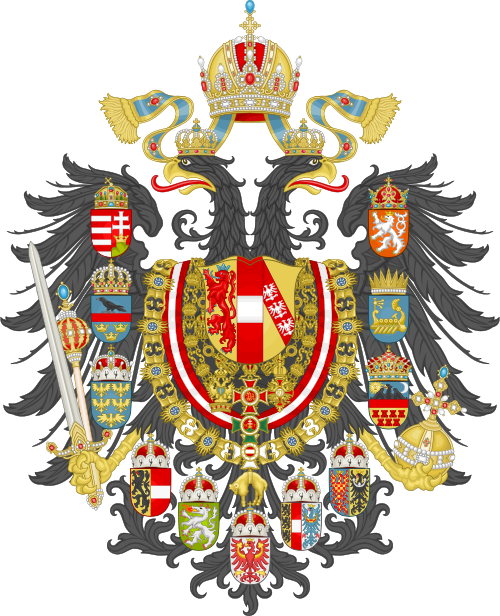
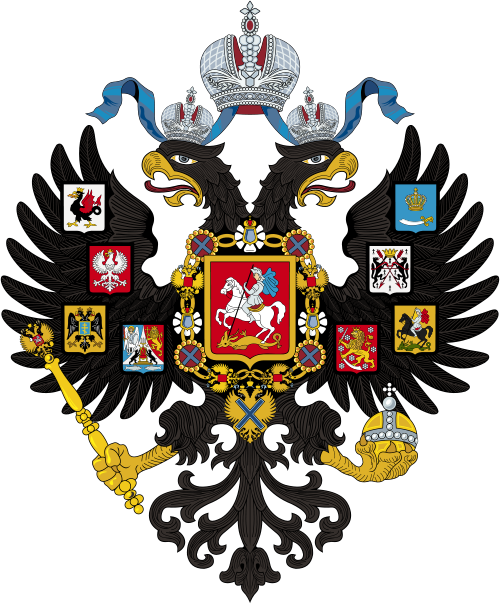
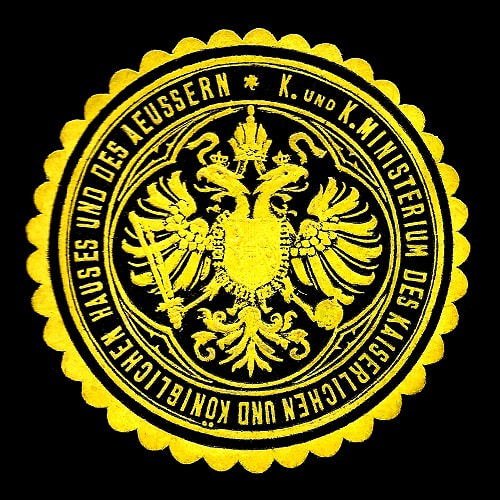
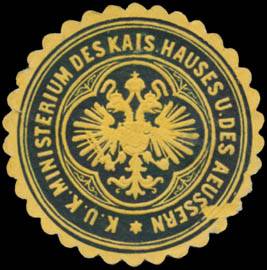
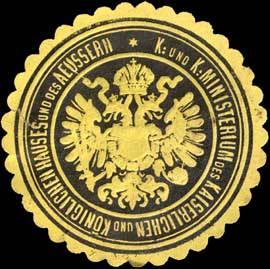
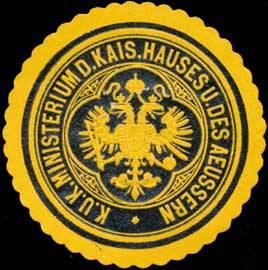
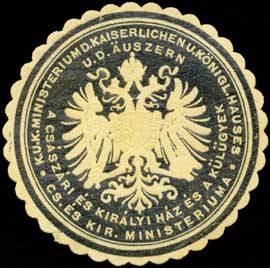



 RSS Feed
RSS Feed
